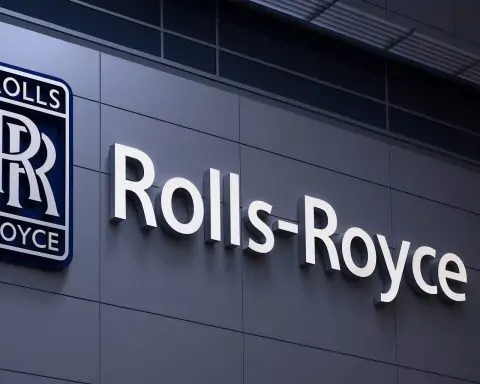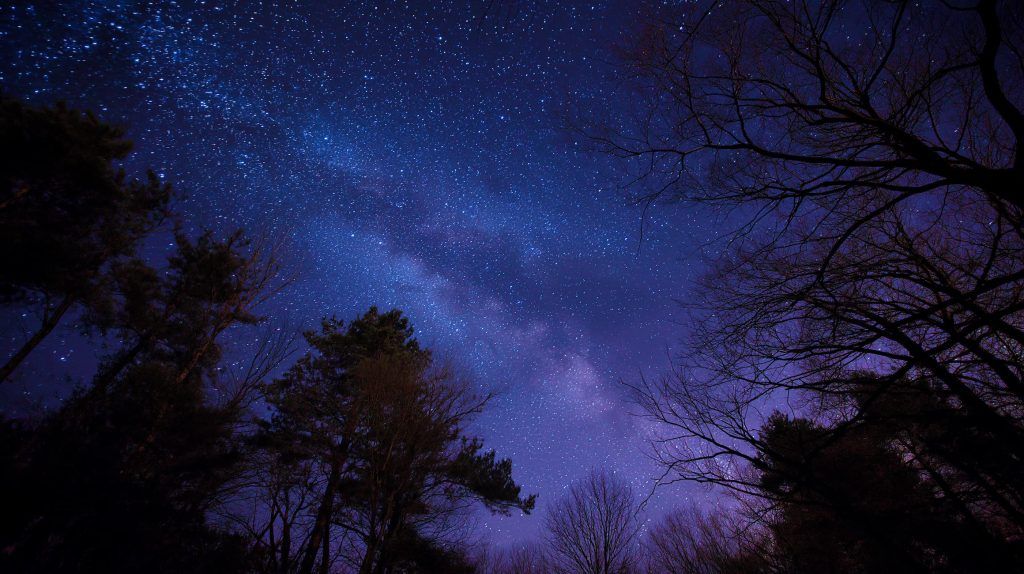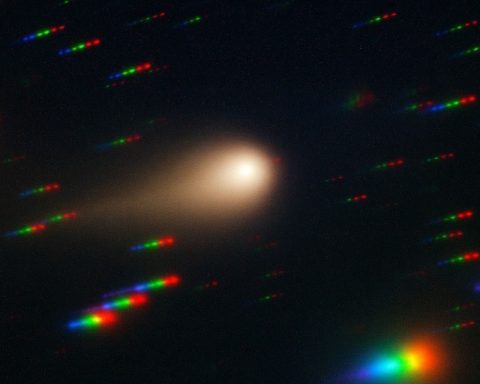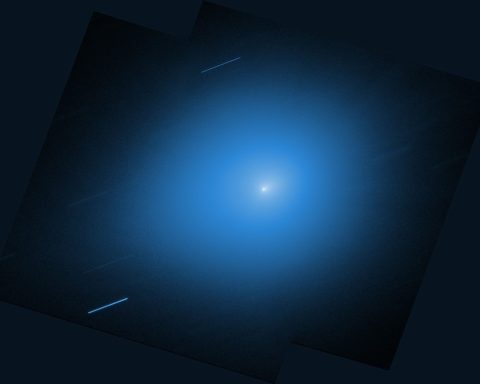Launches and Rocket Test Highlights
- China’s Weekend Launches and Setbacks: In the early hours of August 16, Chinese commercial firm CAS Space launched its Kinetica-1 (Lijian-1) rocket from Jiuquan, carrying an undisclosed payload (reportedly including two small satellites from Mexico) [1]. Details on the mission’s outcome remain scarce, but the launch marked CAS Space’s latest attempt to expand China’s growing roster of private orbital missions. Meanwhile, fellow Chinese startup LandSpace suffered a rocket failure just one day earlier. Its Zhuque-2E Y3 methane-fueled rocket lifted off on Aug. 15 from Jiuquan but “experienced an anomaly” mid-flight and failed to reach orbit [2]. LandSpace, which made history with a successful methane-fueled launch in 2023, said it is investigating the cause of the failure [3] [4]. The back-to-back events highlight both the rapid progress and challenges in China’s burgeoning commercial launch sector.
- SpaceX Starlink Schedule Shuffle: SpaceX did not conduct any Falcon 9 launches over the weekend, but it adjusted its manifest. A Falcon 9 launch of Starlink Group 17-5 – originally eyed for Sunday – was postponed to Monday, Aug. 18 [5]. The mission will carry 24 of SpaceX’s Starlink mini-satellites from California’s Vandenberg Space Force Base. SpaceX announced the new Monday launch window (8:44 a.m. to 12:44 p.m. Pacific) and noted this will be the ninth flight for the booster, which aims to land on the Of Course I Still Love You droneship after delivering the satellites to orbit [6] [7]. The slight delay gives SpaceX time to prepare for a busy week ahead, including potential sonic booms over coastal California during the launch [8].
- Starship Test Flight Cleared: SpaceX also received a green light for its next Starship test launch. After completing an investigation into the previous Starship failure in May, the FAA has approved SpaceX’s 10th Starship/Super Heavy flight test, now targeted for August 24 [9]. SpaceX confirmed it plans to fly Ship 37 atop Booster 16 from its Starbase, Texas site, incorporating fixes and new objectives. “The upcoming flight will continue to expand the operating envelope on the Super Heavy booster, with multiple landing burn tests planned,” SpaceX noted, adding that it will attempt Starship’s first payload deployment (using dummy Starlink payloads) and an in-space engine relight during the mission [10]. These goals were left unachieved in May’s test due to a pressurization system failure in Starship’s upper-stage fuel tank [11]. Engineers traced that issue to a faulty methane tank diffuser, which led to loss of attitude control and the inability to deploy the test payloads in Flight 9 [12] [13]. Having reproduced the failure in ground tests and implemented corrections, SpaceX is optimistic that Starship Flight 10 will demonstrate the vehicle’s full capabilities [14] [15]. If successful, it would mark a major step forward for the Starship program after multiple setbacks.
- Rocket Lab & ULA Updates: Other launch providers saw notable activity earlier in the week. On Aug. 13, United Launch Alliance (ULA) finally launched its new Vulcan Centaur rocket on its debut national security mission for the U.S. Space Force [16]. The USSF-106 mission’s liftoff from Cape Canaveral was a critical milestone for Vulcan as ULA transitions from its legacy Atlas and Delta vehicles. ULA has not released full details, but initial reports indicate a successful flight, marking Vulcan’s entry into service [17]. And while Rocket Lab had no launches during the weekend, the company made news by scrubbing a “super secret” government launch (JAKE 4/HASTE) and humorously explaining the delay was “precisely because it’s a super secret government mission” [18] – highlighting the sometimes quirky nature of launch scheduling.
- Massive Moon Rocket Test in China: In a major development for China’s lunar ambitions, the China Manned Space Agency announced a successful static fire test of the first stage of its Long March-10 moon rocket on Friday. The full-scale test, conducted at Wenchang Launch Site, ignited seven YF-100K engines simultaneously for about 30 seconds, generating nearly 900 tonnes of thrust [19]. All engines ran in sync under various power settings, yielding a trove of data and “confirming the engines could run in sync under both normal and high-power conditions,” according to the agency [20]. Officials hailed it as “another major milestone” for China’s crewed lunar program [21]. The Long March-10 is a super-heavy launcher (92 meters tall) that will use 21 of these engines (7 on the core and 7 on each of two boosters) to send astronauts to the Moon by 2030 [22]. This static fire – China’s largest-ever full-system engine test – follows recent tests of the new Mengzhou crew spacecraft’s escape system and the Lanyue lunar lander, bringing China a step closer to its planned lunar landing and the construction of an international Moon base with Russia [23] [24].
Space Station & Mission Updates
- Chinese Spacewalk and Station Experiments: China’s Tiangong space station crew (Shenzhou-20 mission) marked the halfway point of their six-month stay with a successful spacewalk on Aug. 15. Astronauts Chen Dong and Wang Jie performed their mission’s third EVA, spending 6.5 hours outside the station installing debris shields, adding external instruments, and inspecting equipment [25]. Assisted by the station’s robotic arm, they completed all tasks by 10:47 p.m. Beijing time Friday [26]. Veteran taikonaut Chen Dong set a new national record, having now logged six spacewalks – the most by any Chinese astronaut [27]. With this EVA done, the China Manned Space Agency said the crew is in good shape and “making steady progress in various space science experiments” [28]. In the coming weeks, they will focus on research in microgravity physics, space medicine, life sciences, materials science, and other tech demos in orbit [29]. The Shenzhou-20 crew’s achievements underscore China’s expanding human spaceflight capabilities as the Tiangong station approaches full operational status.
- ISS Crew Routines and New Experiments: Aboard the International Space Station (ISS), it was a quieter period with no new crew arrivals or spacewalks during the weekend. (NASA’s Crew-11 astronauts arrived at the ISS earlier this month on Aug. 2 and are settling in for their mission.) The astronauts kept busy with maintenance and research. Notably, the Crew-11 team kicked off a “Veg-03” space agriculture experiment to grow fresh greens in microgravity. They have been planting strips of lettuce, kale, and wasabi mustard seeds into fabric “seed pillows” filled with a special clay-based growth medium [30]. This soil-free gardening approach is testing how well different leafy greens can grow in orbit. According to NASA, the crew can choose from a “seed library” of crops (like Red Russian kale and Dragoon lettuce) and will cultivate them under LED lighting in the station’s Veggie plant chamber [31]. The goal is to supplement astronauts’ diets on future deep-space missions with nutritious fresh produce. Early indications show the seedlings are sprouting, and the crew will periodically harvest and taste the space-grown salads as the study continues [32]. Alongside farming, the ISS crew conducted experiments on fluid physics and installed a high-speed computing device, while flight controllers performed a routine orbital reboost of the station to counteract atmospheric drag (keeping the ISS at the proper altitude). All these activities are laying groundwork for long-duration missions – from the Moon to Mars – where onboard self-sufficiency and science are key.
- Artemis Program Update: On the exploration front, NASA took another small but significant step toward the Moon. The Orion spacecraft for Artemis II (the next crewed mission around the Moon) was moved into NASA Kennedy Space Center’s vacuum testing chamber on Aug. 10 for final testing [33]. This past week, teams completed inspections on Orion’s European Service Module and began fueling preparations. NASA officials said the mission remains on track for late 2024, despite some budget uncertainties. Additionally, NASA highlighted a recent study of Apollo lunar quake data (integrating new readings from the Lunar Reconnaissance Orbiter) that will help engineers design structures for Artemis astronauts on the Moon’s surface [34]. While these items fell slightly outside the Aug.16–17 window, they show how current operations in low Earth orbit and past mission data are feeding forward into humanity’s next big adventures.
New Discoveries and Space Science Highlights
- Webb Spots Oldest Black Hole Ever Seen: A team of astronomers announced a record-breaking discovery courtesy of the James Webb Space Telescope (JWST) – the most distant confirmed black hole observed to date [35]. Hidden within a faint “little red dot” galaxy labeled CAPERS-LRD-z9, this supermassive black hole dates back to just 500 million years after the Big Bang [36]. In other words, its light has been traveling for 13.3 billion years to reach us [37]. The black hole’s estimated mass is astoundingly large – about 300 million times the Sun, making up roughly half the mass of its host galaxy [38]. Finding such a massive black hole so early in cosmic history is a puzzle, as it suggests black holes in the young universe grew much faster than current theories predict [39]. “We’re really pushing the boundaries of what current technology can detect,” said Dr. Anthony Taylor of the University of Texas, lead researcher on the discovery [40]. The telltale sign was a distinctive spectroscopic signature of gas orbiting the black hole – detected in JWST’s infrared data [41]. Because the galaxy is one of a new class of compact, bright “Little Red Dots” seen only in early-universe Webb images [42], this find offers a unique window into how the first galaxies and black holes formed. The discovery, published in Astrophysical Journal on Aug. 6, opens new questions about whether primordial black holes started out far bigger than expected or grew at unprecedented rates [43]. The Webb telescope is slated to follow up with higher-resolution observations of CAPERS-LRD-z9 to further unravel these cosmic secrets [44].
- Exoplanet Hopes Dashed in TRAPPIST-1 System: In exoplanet news, scientists reported that TRAPPIST-1’s famous Earth-sized planets may be less hospitable than hoped. Using JWST, researchers found no evidence of an Earth-like atmosphere on TRAPPIST-1d, one of the seven roughly Earth-size worlds orbiting this nearby red dwarf star [45] [46]. This marks the third planet in the system (after TRAPPIST-1b and 1c) now known to be essentially airless or extremely thin-aired. “At this point, we can rule out TRAPPIST-1d from a list of potential Earth twins or cousins,” said team member Caroline Piaulet-Ghorayeb of Université de Montréal [47] [48]. The Webb telescope’s sensitive NIRSpec instrument searched for atmospheric gases during multiple transits of TRAPPIST-1d in front of its star. It detected no signs of water, carbon dioxide, or methane – the kinds of gases that a temperate, Earth-like atmosphere would exhibit [49]. The null result suggests TRAPPIST-1d might be a barren rock or has only a very thin atmosphere (perhaps like Mars), or possibly a thick, high cloud layer masking any atmospheric signatures [50]. The likely culprit is the parent star: TRAPPIST-1 is a feisty red dwarf that emits frequent solar flares and intense radiation bursts which can strip atmospheres from closely orbiting planets [51]. Being the third planet out, TRAPPIST-1d may have lost its air over time due to this stellar onslaught. The good news is that four other planets in the system remain untested – some of which lie in the star’s habitable zone where conditions might be gentler [52]. Astronomers are continuing to use JWST to probe those worlds (TRAPPIST-1e, f, g) for signs of atmospheres. Even if those planets also turn out airless, the findings still teach us valuable lessons about planetary evolution under harsh stellar conditions. The TRAPPIST-1 results were published this week in Nature and represent Webb’s growing legacy in exoplanet research.
- Other Noteworthy Science News: Data from various space observatories made headlines as well. Scientists using NASA’s Fermi and Swift telescopes unveiled a stunning new image of a distant galaxy’s jet that resembles the fiery “Eye of Sauron,” shedding light on high-energy gamma-ray emissions from black hole jets [53]. In the realm of planetary science, researchers analyzing NASA’s Lunar Reconnaissance Orbiter (LRO) data combined with Apollo-era seismic records announced a new moonquake forecast model that can predict the frequency of tiny tremors on the Moon [54]. This could inform the design of future lunar habitats. And back on Earth, skywatchers noted that the annual Perseid meteor shower peaked under the glare of a nearly full moon this weekend, washing out most meteors – a disappointment for stargazers [55]. NASA advised enthusiasts to focus on brighter fireballs or catch the shower’s tail end in the coming nights. Each of these developments, from black holes to exoplanets to moonquakes, highlights how August 2025 has been an exciting time for space science, with new discoveries continually expanding our understanding of the cosmos.
Industry and Policy Developments
- Space Industry Deals and Investments: The business of spaceflight saw significant moves, particularly in the commercial launch sector. In China, both CAS Space and LandSpace are advancing plans to go public, seeking fresh capital to fuel their growth. CAS Space has completed regulatory counseling for an IPO on Shanghai’s STAR Market – the first formal step toward a stock listing [56]. LandSpace is reportedly not far behind in exploring an IPO route as well [57]. These developments come as Chinese authorities signal support for high-tech companies raising funds, and could make CAS Space the first Chinese launch firm to IPO domestically. Over in the U.S., Firefly Aerospace – a Texas-based launch and spacecraft startup – is also preparing to enter public markets. Firefly raised its target IPO fundraising to about $696 million, aiming for a valuation near $6 billion amid strong investor appetite in the space sector [58]. In related news, Impulse Space, a California startup developing orbital transfer vehicles (space tugs), reported booming interest in its planned rideshare missions to geostationary orbit. The company says demand from satellite operators has been so robust that it’s scaling up its “GEO express” rideshare program to deliver multiple satellites to high orbits efficiently. And in Europe, Norway’s Kongsberg Satellite Services announced an expansion of ground station and smallsat services in the Arctic region, seeking to improve communications for polar-orbit satellites. Together, these moves underscore a global trend: space companies are securing funding and partnerships to support constellations, in-space services, and ambitious launch schedules.
- Mergers and Collaborations: The period also saw new partnerships aimed at advancing space tech. For example, Cambrian Works, a lunar infrastructure startup, selected Astroscale U.S. as a partner to study boosting NASA’s aging Swift astrophysics spacecraft to a higher orbit. Swift, a satellite launched in 2004 to observe gamma-ray bursts, is losing altitude, and this unusual collaboration will examine using a commercial servicer to extend Swift’s life. In another deal announced at the 39th Small Satellite Conference, Montreal-based Xiphos Technologies teamed up with Europe’s ZAITRA to develop high-performance edge AI processors for smallsats, aiming to empower satellites to do more data-crunching on-board [59]. Such partnerships highlight the industry’s push toward more capable and serviceable space infrastructure. Additionally, Japanese firm ispace (famous for its Moon lander attempt) disclosed talks with potential U.S. partners for its next lunar missions, and satellite operator Viasat rolled out a new “HaloNet” suite for near-Earth communications, seeking to integrate LEO, GEO, and airborne networks for seamless connectivity [60]. All these initiatives point to a space industry that is maturing through strategic alliances, with established players and startups combining expertise to tackle technical challenges.
- Space Policy and Regulatory News: On the policy front, the United States introduced sweeping measures to bolster its commercial space competitiveness. On Aug. 15, President Trump signed a new Executive Order “Enabling Competition in the Commercial Space Industry,” with Acting NASA Administrator Sean P. Duffy and Transportation Secretary present for the signing [61] [62]. The order directs federal agencies to streamline licensing and environmental approvals for launches and reentries, cut regulatory “red tape” for building new U.S. spaceports, and promote novel in-space activities like manufacturing and refueling [63] [64]. It even creates a dedicated space innovation advisor role in the DOT and elevates the Office of Space Commerce within the Commerce Department [65]. “This order safely removes regulatory barriers so that U.S. companies can dominate commercial space activities,” said FAA Administrator Bryan Bedford, praising the initiative [66]. Industry officials lauded the move, which should accelerate the already breakneck launch cadence in the U.S. by easing bureaucratic hurdles. In a related shake-up, the FAA disbanded and is reconstituting its Commercial Space Transportation Advisory Committee (COMSTAC) as of Aug. 15 [67]. The FAA dismissed the entire membership of the committee, which had included industry executives and experts, in order to “reset” the group under the new policy regime. This unusual step came shortly after some COMSTAC members had criticized the pace of regulatory reform; now FAA leadership will bring in new advisors aligned with the administration’s competitive vision [68]. Elsewhere, tensions between rapid commercial launch growth and local regulation popped up on the U.S. West Coast. California’s Coastal Commission dealt SpaceX a setback by voting against the company’s request to almost double Falcon 9 launch rates at Vandenberg (from 50 up to 95 per year) [69]. Citing environmental and community concerns, the commission’s Aug. 14 decision means SpaceX will likely need to revise its expansion plans or provide more mitigations. This highlights the balancing act between encouraging space industry growth and managing its local impacts.
- Geopolitical and International Cooperation: Internationally, space cooperation and rivalry both made news. Russia and China reaffirmed their partnership on the planned International Lunar Research Station, an Antarctic Moon base they aim to start building by 2030 [70]. Russian officials, at a space conference in Moscow on Aug. 16, praised China’s progress on Long March-10 and indicated Russia’s heavy rocket (Yenisei) is also in development to contribute to the lunar project. On the other hand, European Space Agency (ESA) leaders expressed concern over geopolitical tensions potentially affecting space collaboration. ESA’s director general spoke on Aug. 17 about efforts to secure independent European access to space (following delays with the new Ariane 6 rocket) and reduce reliance on any single partner country. He pointed to the successful Aug. 13 Ariane 6 test launch carrying a weather satellite as a positive sign for Europe’s launch autonomy [71]. Additionally, India is riding high on recent successes – while not a development of these two days, it’s worth noting India’s space agency ISRO is gearing up to celebrate the one-year anniversary of Chandrayaan-3’s moon landing later this month and is in talks with Japan for a joint lunar rover mission. All told, the weekend underscored that space is increasingly a strategic domain: countries are doubling down on policies to boost their industries, even as collaborative projects like the Artemis Accords and the ILRS Moon base progress carefully amid a complex geopolitical backdrop.
In summary, the period of August 16–17, 2025 was packed with noteworthy space events across the board. From rocket launches (and explosions) to pioneering science findings and significant policy moves, the global space community had a busy weekend. New rockets roared to life – or were grounded for another day – and spacefarers in orbit ventured outside their vehicles. Astronomers extended our cosmic horizon with record-breaking discoveries, even as Earthbound engineers planted the seeds (literally) for sustaining life on future missions. Commercial space firms chased bigger funding and bigger constellations, while regulators and leaders raced to keep rules up to speed with innovation. It’s a vivid reminder that the modern space age is firing on all cylinders. As one official quipped this week, the goal is to “enable American space competitiveness and superiority for decades to come” [72] – but as the news from around the world shows, the race to space is now a truly multinational endeavor. Each development from this weekend – whether a small step like a seedling in microgravity or a giant leap like a Moon rocket test – is another chapter in humanity’s push onward and upward to the final frontier.
Sources:
- CAS Space and LandSpace launch updates – KeepTrack Space Brief, Aug 16, 2025 [73] [74]; Reuters [75] [76]
- SpaceX Starlink launch delay – SatNews Daily, Aug 16, 2025 [77] [78]
- SpaceX Starship Flight 10 plans – SpaceNews [79]; Spaceflight Now [80] [81] [82]
- ULA Vulcan debut mission – Spaceflight Now Launch Log [83]; SpaceNews report [84]
- Long March-10 seven-engine test – South China Morning Post, Aug 16, 2025 [85] [86]
- Shenzhou-20 EVA and station status – Xinhua (via english.gov.cn) Aug 16, 2025 [87] [88]
- ISS Veg-03 plant experiment – NASA Science Update [89] [90]
- JWST most distant black hole discovery – SciTechDaily (Univ. of Texas press release) Aug 15, 2025 [91] [92]
- JWST TRAPPIST-1d atmosphere findings – Space.com, Aug 14, 2025 [93] [94]
- FAA Executive Order and policy changes – NASA News Release Aug 13, 2025 [95] [96]; SpaceNews Aug 15, 2025 [97]
- California launch regulations – Reuters Science News, Aug 15, 2025 [98]
- Chinese commercial space IPO plans – SpaceNews, Aug 14, 2025 [99]; Reuters Business News, Aug 4, 2025 [100]
- Impulse and Kongsberg industry news – SpaceNews.com via SmallSat Conference reports [101].
References
1. x.com, 2. www.reuters.com, 3. www.reuters.com, 4. www.reuters.com, 5. news.satnews.com, 6. news.satnews.com, 7. news.satnews.com, 8. news.satnews.com, 9. www.copernical.com, 10. spaceflightnow.com, 11. spaceflightnow.com, 12. spaceflightnow.com, 13. spaceflightnow.com, 14. spaceflightnow.com, 15. spaceflightnow.com, 16. spaceflightnow.com, 17. spacenews.com, 18. news.satnews.com, 19. www.scmp.com, 20. www.scmp.com, 21. www.scmp.com, 22. www.scmp.com, 23. www.scmp.com, 24. www.scmp.com, 25. english.www.gov.cn, 26. english.www.gov.cn, 27. english.www.gov.cn, 28. english.www.gov.cn, 29. english.www.gov.cn, 30. www.threads.com, 31. science.nasa.gov, 32. news.ssbcrack.com, 33. www.nasa.gov, 34. science.nasa.gov, 35. scitechdaily.com, 36. scitechdaily.com, 37. scitechdaily.com, 38. scitechdaily.com, 39. scitechdaily.com, 40. scitechdaily.com, 41. scitechdaily.com, 42. scitechdaily.com, 43. scitechdaily.com, 44. scitechdaily.com, 45. www.space.com, 46. www.space.com, 47. www.space.com, 48. www.space.com, 49. www.space.com, 50. www.space.com, 51. www.space.com, 52. www.space.com, 53. phys.org, 54. science.nasa.gov, 55. spacepolicyonline.com, 56. starfightersspace.com, 57. starfightersspace.com, 58. www.reuters.com, 59. spacenews.com, 60. spacenews.com, 61. www.nasa.gov, 62. www.nasa.gov, 63. www.nasa.gov, 64. www.nasa.gov, 65. www.nasa.gov, 66. www.nasa.gov, 67. spacenews.com, 68. spacenews.com, 69. www.reuters.com, 70. www.scmp.com, 71. starfightersspace.com, 72. www.nasa.gov, 73. x.com, 74. www.reuters.com, 75. www.reuters.com, 76. www.reuters.com, 77. news.satnews.com, 78. news.satnews.com, 79. www.copernical.com, 80. spaceflightnow.com, 81. spaceflightnow.com, 82. spaceflightnow.com, 83. spaceflightnow.com, 84. spacenews.com, 85. www.scmp.com, 86. www.scmp.com, 87. english.www.gov.cn, 88. english.www.gov.cn, 89. www.threads.com, 90. science.nasa.gov, 91. scitechdaily.com, 92. scitechdaily.com, 93. www.space.com, 94. www.space.com, 95. www.nasa.gov, 96. www.nasa.gov, 97. spacenews.com, 98. www.reuters.com, 99. starfightersspace.com, 100. www.reuters.com, 101. spacenews.com










